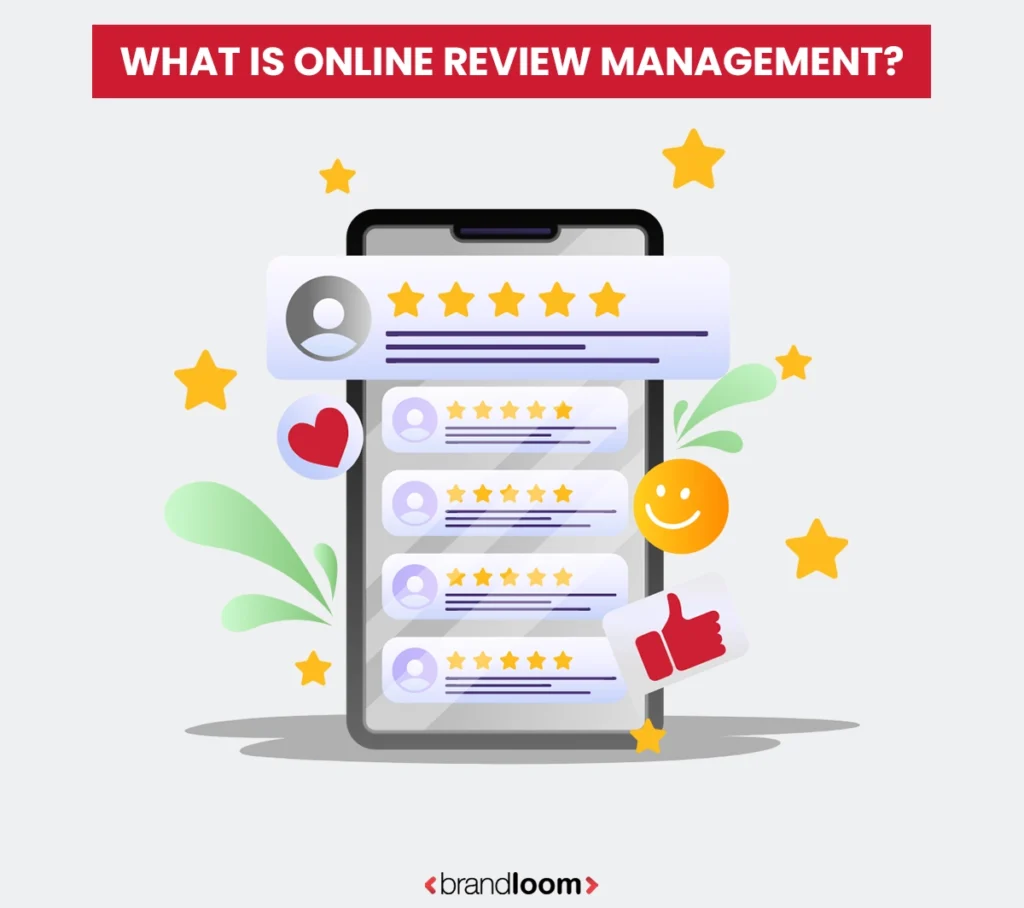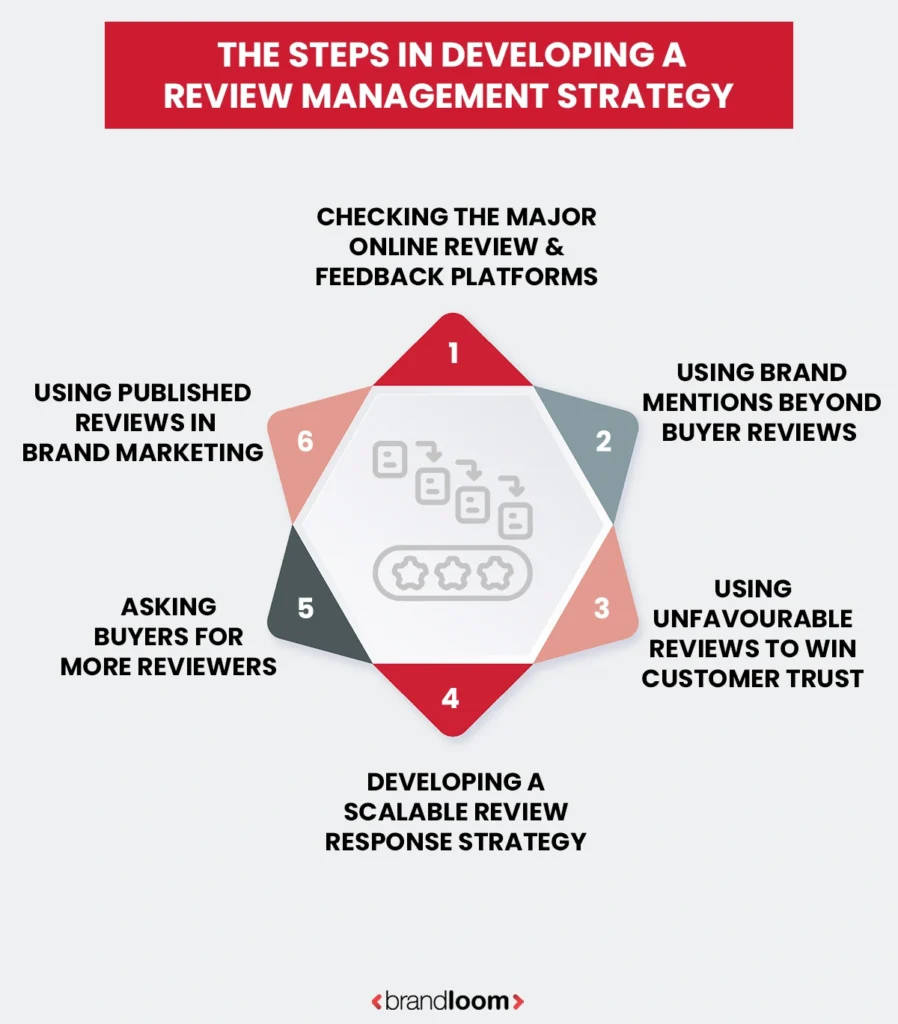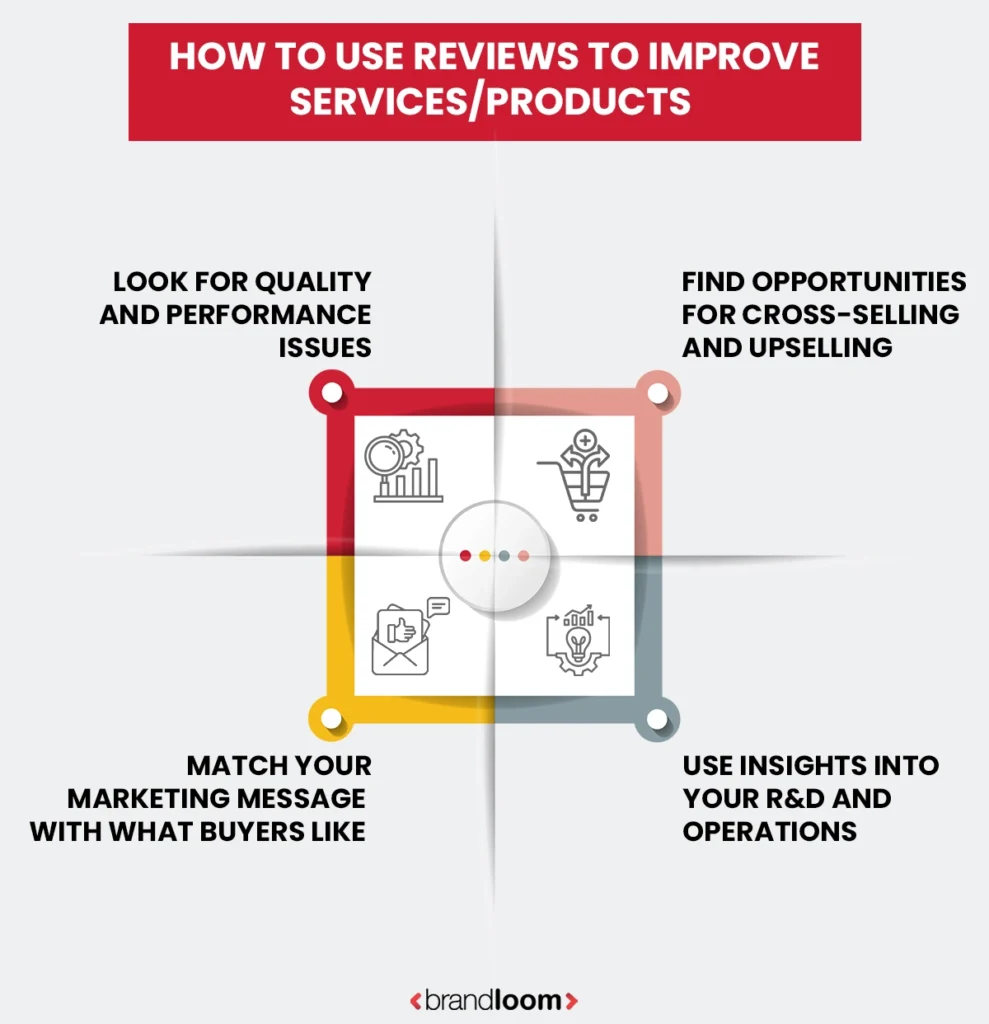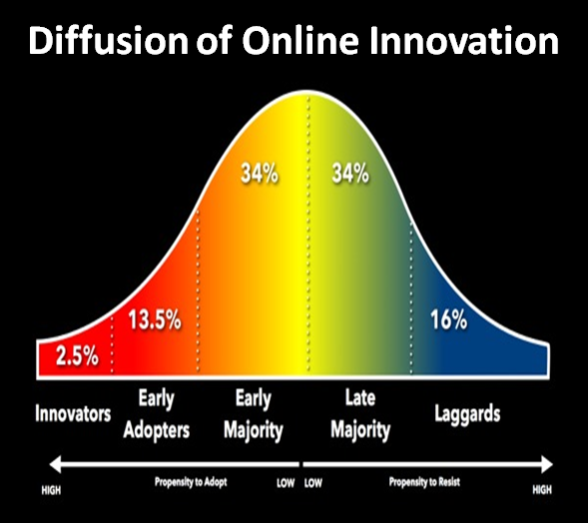Online shopping is a part of modern life, but it has made buyers choosy, too. Most of your target buyers read reviews before making a purchase. Without enough positive and convincing reviews on your website, they will move to a rival brand in the blink of an eye. The product and service reviews are your reputation on display, making review management a crucial growth tool.
Your brand needs the right review management tools and strategy to stay ahead of the pack. It works as a sales growth booster and helps improve online reputation management. The right strategy and tool will turn happy customers into loyal advocates. A delighted buyer posting authentic feedback will attract hundreds, while negative customer reviews will repel others.
Your business needs a solid and customized online reputation management service to experience consistent growth. You need a versatile and customer-focused branding solution provider to manage your company reviews online. BrandLoom has catered to hundreds of brands in India and abroad for online reputation management.
What Is Online Review Management?

Online review management is the process of monitoring, responding to, and using buyer reviews by a brand to achieve revenue and customer base growth. It covers customer feedback and reviews posted on digital platforms like GBP, Amazon, Reddit, and various social media circles.
Review management is not limited to thanking your happy customers and addressing unhappy ones. It involves effective strategies to monitor the ratings and reviews, build trust, and brand image. With the right strategy, you can influence the buying decisions of the target customers.
With an effective review management policy, your positive reviews appear at the top of online search results. It also helps your brand deal with negative feedback in the proper way, without hampering customer relationships. Your brand image becomes relatable and consistent across digital platforms.
Online Review Management is a Must-have and Why
Most of your target customers begin by searching on Google. They look for the brands appearing at the top of search results, naturally. Those snippets also show customer reviews and testimonials. What does it lead to? Brands with a majority of positive product reviews woo the buyers quickly, while those ignoring customer feedback get snubbed. There is a Spiegel research center study backing this view.
You should hire a capable digital marketing solution provider offering multi-level online reputation management services in India.
Analyze Your Brand’s Online Reputation Before Strategy Development
Your brand needs effective review management for long–term success and steady growth. But check the current online reputation before you get to the drawing boards. Here’s what you should do to check the existing customer feedback:
- Find out where your brand’s online reviews exist
- Look at the feedback type (positive, negative, and neutral, etc.)
- Look for any recurring pattern in those reviews/feedback
- Compare with category rivals to understand your brand’s position.
You need a digital marketing agency with unmatched expertise in online review management. BrandLoom offers a comprehensive marketing strategy covering your business’s online presence, including online PR and reputation management.
The Psychological Effect of Social Proof and User Reviews
Even before the era of online shopping, people relied a lot on others’ feedback. In today’s digitally connected times, people look for online validations before placing an order. This buying behavior and thinking process has scientific backing. Robert Cialdini, in his principle of social proof, shows people observe the actions of others to decide their own actions. It is visible in online buying, too.
Think of the confusion of your target buyers. Hundreds of brands are offering similar services and products, and using marketing pitches, too. How do they choose the best one? They look for the best reviews in any segment to make up their mind. Positive customer reviews play a key role in decision-making.
The Impact of Reviews on Buying Decisions
A Podium survey in 2024 revealed stunning statistics on the power of online reviews and their effect on buying decisions. Approximately 93% of consumers say online reviews affect their buying decisions. So, you can not overlook the importance of customer ratings and reviews. That includes reviews and feedback of every type, posted on every online platform. Thanking the buyers posting good reviews is as important as responding to negative reviews.
You need a competent ally to develop an effective review management strategy for your brand. Choose a digital marketing company with expertise in online brand image and reputation management for the best results.
The Steps in Developing a Review Management Strategy
Your brand needs a well-defined and effective online reputation management strategy for stable growth. Here are the steps involved:

1. Checking The Major Online Review & Feedback Platforms
You can begin with the popular and big ones like:
- Google Business Profile.
- Review portals like Trustpilot and Mouthshut.
- Social media handles like Facebook, LinkedIn, X, and Instagram.
- Online marketplaces like Flipkart and Amazon.
To track brand mentions properly, you can:
- Set up Google Alerts for your company and products
- Observe activities on top social media profiles, including user posts, comments, and reactions.
- Use social media management tools like Hootsuite, Brandwatch, etc.
2. Using Brand Mentions Beyond Buyer Reviews
Don’t underestimate the reach of digital word-of-mouth for your brand. Such word of mouth takes place on any online platform every day. So, you must monitor your brand’s Instagram reels, Reddit threads, Facebook, and LinkedIn Posts. Then, engage with those posts and user reactions consistently.
Here’s what you can do:
- Look out for brand name variations and hashtags.
- Respond to posts and comments even outside of the review context.
- Engage with indirectly tagged mentions.
It helps improve your brand’s customer relationships online.
3. Using Unfavorable Reviews to Win Customer Trust
Does the idea of using negative customer reviews to improve brand image sound odd? The reality may take you by surprise. About 82% of online buyers specifically look for negative reviews, according to study data. Why is it so?
They want to see how well a brand can manage online reviews. When you overlook responding to negative reviews, it makes future buyers unsure. On the contrary, brands responding to all types of customer feedback, including harsh ones, win customer trust easily. If you revert to such reviews with empathy and genuineness, that can change the buyer’s mindset.
It is how you should tackle negative reviews of your business:
- Respond to negative reviews fast, ideally within 24 hours.
- Check the root of the problem and offer a proper solution (refund, replacement, warranty).
- Be empathetic and professional in your response.
With proper review monitoring and handling, you can turn a disgruntled customer into a loyal one.
Here are the pitfalls to avoid:
- Responding to negative reviews after a long time.
- Using pre-recorded, generic statements.
- Refusing to acknowledge the root cause of the problem.
- Removing such reviews from the thread without resolving them.
4. Developing a Scalable Review Response Strategy
Your brand needs to follow a scalable review response strategy for great customer satisfaction and brand reputation management.
Here’s what you should do:
Feeling good about having plenty of happy customer reviews on your website and social media handles? It won’t cut much ice if most of the reviews are 3-4 years old. Available data shows online that about 97% of shoppers pay more attention to recently published reviews than older ones. It is more applicable if they are looking for a new or unknown product.
- Develop standard operating protocols for response tone, escalation, and approvals.
- Set clear timeframes for responding to all types of customer reviews.
- Offer proper training to your team members for reviewing responses.
- Use automated responses with caution. A warm, personalized follow-up must follow a standard initial greeting.
5. Asking Buyers For More Reviews
Your brand needs a steady flow of customer reviews to gain credibility and relevance for new customers.
To increase online review volume, you can use the following methods:
Online reviews of your brand and its products will certainly help in attracting new buyers. But the benefits do not stop there. You can develop a policy to use and reuse authentic customer reviews on your website and other online profiles.
- Ask for reviews after a positive interaction with a buyer (website and social media).
- Offer discounts and loyalty points for buyers posting authentic reviews.
- Offer short links to make reviewing easy for buyers.
- Publicly thank the reviewers to inspire others.
6. Using Published Reviews In Brand Marketing
On the website, keep a dedicated testimonials section featuring customer reviews. Use clear images and videos to make them interesting and credible.
Later, you can reuse those reviews in social media profiles in different ways. For example, you can:
- Use these review snippets on different product pages.
- Use top user reviews to make carousel posts.
- Create a slideshow for LinkedIn using the best reviews.
- Use review quotes in Google ads to build trust.
- Develop case studies from major client stories.
For customized and effective review management, you need a reliable service provider. At Brandloom, we tick the boxes with our in-depth expertise in branding solution development and online reputation management services.
The Legal and Ethical Angles in Review Management
Review management comes with its share of rules and ethical concerns. To keep your brand image intact, do not deviate from the norms.
Follow these steps to cover legal and ethical aspects in review management:
- Do not post any fake reviews. It attracts strong reactions from Google and other platforms.
- Avoid filtering reviews selectively.
- When you ask for reviews, adhere to data privacy laws (region-specific).
- Follow platform-specific norms, such as incentivizing reviews on Amazon.
Remember, online reputation management relies on transparency, and an ethical approach earns you lasting consumer trust.
Integrating Review Management into the Customer Journey
Using reviews will bring your brand the desired results when you use them properly. The key is using them at the right phase of the buyer’s journey.
- The awareness stage- Show your customers reviews snippets through ads.
- The consideration stage- Using testimonials on landing pages works well.
- The decision-making stage- Putting customer ratings and reviews near “Buy Now” buttons.
- Post-Purchase stage- Ask for a review at the top customer satisfaction level.
Using Sector-Specific Review Management Strategies
Your company may cater to a specific sector, or more than one. So, you need to use sector-specific online reputation management strategies.
- E-commerce- For online stores and marketplaces, you can use product detail page reviews, unboxing UGC, marketplace ratings, etc.
- B2B Services- B2B companies should focus on using case study testimonials and LinkedIn recommendations.
- Hospitality- Travel and hospitality brands can use ratings and reviews on portals like TripAdvisor and social media feeds.
- Healthcare and diagnostics- Healthcare and diagnostic brands should focus on reviews on online health forums, and reviews on Practo, Google Business, etc.
Your brand will benefit from seeking the expertise and guidance of leading branding solution providers. At BrandLoom, we cater to companies seeking sector-specific, customized online reputation management services.
Assessing the ROI of Revenue Management

Just using an ORM strategy for your brand is not enough. You need to check the output of the strategy using suitable parameters. Remember, online reputation management is not limited to having a good image. When properly used, it becomes your brand’s growth driver. How to know if it’s working as intended? Well, track metrics linked directly to business outcomes.
Conversion Rate changes
After using a reputation management strategy, check the conversion rates. If there’s no positive and visible change in the conversion rate, the strategy needs polishing.
Average Rating Growth Across Platforms
How do you know the ORM strategy is on the right track? It will lead to a steady rise in your product ratings on Google and online marketplaces. If the average rating moves from 3.5 to 4 or higher, it indicates growing customer satisfaction.
Sentiment Score Changes
You can use sentiment analysis tools and check the changes in your brand’s positive-to-negative mention ratio. Companies with higher sentiment scores enjoy better customer retention and repeat orders.
Organic Traffic Growth
More positive reviews on your brand help improve its Google ranking. Better ratings and fresh user reviews help improve your local search visibility and organic SERPs. The result is a visible growth in more qualified traffic to your website.
The Effect on Revenue
Nothing reflects the effect of an ORM strategy better than a revenue boost. Check how review-based ads, slides, and social media posts influence your sales. The same logic applies to higher ratings. Studies show that a minor drop from a 4.0 to a 3.9-star rating causes a 20% drop in sales.
Using Reviews to Improve Services/Products

Online reviews not only help improve brand image and credibility. These customer reviews serve as free and useful market research mines. Look deeply into your user reviews to find information on relevant aspects. These will help you improve products and services. You will also get a clearer idea of customer needs. Here’s how:
Look for Quality and Performance Issues
Read your customer reviews to find recurring quality and performance issues. These can be about longevity, build quality, missing features, and more.
Find Opportunities for Cross-Selling and Upselling
In happy customer reviews, you get the chance for up-selling and cross-selling. For example, a customer praising an induction cooktop set may be interested in buying cooking utensils. Use these reviews as a cue to offer bundled accessories.
Match Your Marketing Message with What Buyers Like
The good reviews already show what your target customers like the most. Use that to your brand’s advantage. If those reviews focus on “great packaging” or “easy setup”, highlight those in your product ads. Use the same strategy in your social media posts.
Use Insights into Your R&D and Operations
Your customer reviews are not the end of their buying journey. Use the insights gained from these reviews with your teams. These are useful for marketing, customer service, and product development teams.
Focusing on Long-Term Reputation Management
Online Review Management isn’t a one-time thing. Plan it like a consistent and ongoing process. The cycle goes like:
- Gather- Ask for reviews from happy customers on different platforms.
- Display- Showcase the best reviews on your website, product pages, and social media profiles.
- Respond- Revert to both happy and dissatisfied customers posting reviews.
- Improve- Use review insights into services/products, and process improvements.
- Repeat- Maintain this process to improve your brand image.
Future Review Management Trends

The online review ecosystem keeps changing. Keep your eyes open for trends and use them in your ORM strategy. Some newer trends are:
AI-Powered Sentiment Analysis
Advanced AI software checks bulk reviews quickly, finding issues that can affect your brand image.
Short-Form Video Testimonials
Your buyers will use short video forms like TikTok and Instagram Reels to make quick and personalized video endorsements. It can work on customers better than polished brand videos.
Voice Reviews on Digital Assistants
Customers will rely more on voice assistants like Alexa, Siri, and Google Home. They will be using voice commands for reviews. Prepare your brand for advanced voice searching.
Blockchain Verification
Using Blockchain technology to confirm the validity of online reviews may be on the cards. It can help reduce the hassles of fake or manipulated ratings.
At BrandLoom, we stay updated on upcoming trends in ORM and digital marketing. Our expertise helps your business stay ahead in the competitive ORM scene.
Conclusion
Do not treat online review management for your business as an afterthought. Online reviews, when managed properly, double up as powerful marketing and conversion tools. A well-planned ORM strategy improves customer trust and retention. It offers your brand an added momentum.
You need the right partner offering effective, customized online reputation management services in India.
At BrandLoom, we excel in using customer feedback to achieve visible business growth and brand image development. Our experts bring decades of branding and digital marketing expertise on board.
Ready to experience how your ratings and reviews fuel business growth? Give us a call to experience the future of ORM.
FAQ
To manage customer reviews, you must focus on active monitoring. Check the buyer’s feedback across your brand website and platforms like social media, GMB, etc. Make sure you respond to each review, including negative and good reviews. It is necessary to respond within 24 hours, as it shows you care for the customers.
For positive reviews, thank the customers and use their feedback in different ways. Respond to negative reviews with empathy and try to get to the root. The response must address the core issue without delay.
Use social listening platforms and Google Alerts to stay updated. BrandLoom offers a mix of technology and strategy for effective review management. Our ORM services help you build customer trust.
Do not get deterred by negative reviews. The key is responding to negative reviews with transparency, empathy, and speed. It is best if you respond to such reviews or feedback within 24 hours. First, admit the customer’s concern and do not get defensive. Do not use any generic response, as it annoys the customer.
Focus on offering a practical solution without delay. It can be a replacement, a refund, or anything else. Once resolved, follow up publicly. It shows you are committed to offering customer satisfaction and service quality.
At BrandLoom, we help your brand turn every negative customer feedback into business growth opportunities.
Recent customer reviews are important as they reflect your brand’s present performance. Your target customers look for updated, newer reviews over older ones. The feedback from new buyers looks more convincing than testimonials posted some years back. First-time buyers also look for updated user reviews before making the decision.
It is not only about what your buyers prefer. Search engines also look for websites with frequent, positive reviews. It helps improve local SEO rankings. So, keeping a tab on recent reviews will bring your brand multiple benefits.
At BrandLoom, we help your brand deal with positive reviews effectively. Our expertise turns positive customer feedback into a means for revenue growth. Your brand image receives a boost.
Social media review management begins with real-time monitoring. Your customers leave reviews and feedback on platforms like Instagram and LinkedIn. These are visible to millions, leaving a direct impact. So, focus on review management on social media profiles and respond quickly.
You must respond to all types of reviews on these digital platforms. Keep the tone professional and empathetic in your replies. It should be consistent across all such platforms. For negative customer feedback, acknowledge the issue publicly. Resolve it by interacting with the customer directly. Look into community groups or forums to find conversations about your business.
At BrandLoom, we cover social media monitoring in ORM strategy development. We turn your DMs, comments, and public posts into trust-building opportunities.
Your customers use different types of networking platforms, outside of Meta and Google. So, your ORM strategy should be platform-focused. The brand voice must be consistent across these platforms.
For Google Business Profile, offer useful, quick replies to address the issue. It helps improve local SEO visibility, too. For LinkedIn, maintain a professional, solutions-focused tone. It shows your brand authority.
For niche platforms like Reddit and Quora, offer detailed, value-driven answers. These should be more informative and not sales-focused.
BrandLoom uses its expertise to redesign your business’s ORM strategy. We optimize your strategy to suit the specific needs of different online platforms. The result is better visibility and credibility on any platform.
Review and reputation management is a strategy brands use to observe, analyze customer feedback, and respond. It goes a long way in developing and improving the brand image. When done well, it can help your revenue grow consistently. The ORM strategy covers online services and social media platforms likeGoogle, Reddit, Quora, Meta, and more.
Reviews are a form of social proof that makes customers trust your brand. Reputation management covers a wider canvas to define and improve brand image. They affect buying decisions, online rankings, and buyer loyalty.
At BrandLoom, we offer review management with digital marketing components like SEO and social listening. This unified approach helps your brand ace the ORM game.
Reputation management is the practice of creating and maintaining the way people think of your brand. It covers all offline and online channels. Examples are online review monitoring, checking social media posts, and forum discussions. The next step is taking strategic action to improve your brand image on all these platforms.
It is not limited to handling negative posts and reviews on your brand. Reputation management focuses on consistent trust building, showcasing brand values, and authentic customer experiences. These have a positive effect on buying decisions and loyalty.
At BrandLoom, we offer our decade-long experience in digital marketing and branding to develop powerful reputation management strategies.
Reputation management begins with monitoring what your customers are saying about the brand on different platforms. You have to monitor public opinion and feedback on the company on Google, social media, review sites, and forums.
Next, you focus on engagement. Respond to all types of reviews and posts on your company and services/products quickly. Maintain empathy, transparency, and be consistent on all platforms. You will benefit by using a solid content strategy. UsePR stories, testimonials, and case studies to improve your online presence.
Reputation management is a constant process. Regular monitoring of the posts and feeds, and prompt response, keeps the cycle alive. It helps you find recurring customer pain points and plan for improvements.
Our customized, structured ORM services at BrandLoom help grow your revenue and customer loyalty. Your business gets the extra edge from our expertise in branding solution development.
Reputation management involves four major components. These are:
Monitoring: You track reviews,social media posts, and forum discussions. These help you understand your brand perception in real time.
Response- You engage quickly with all user reviews and feedback online. Use transparency and empathy in your responses.
Content Creation- Use value-driven content like genuine customer reviews, testimonials, case studies, on different online platforms. It makes your brand image relatable and stronger.
Improvement- Use insights taken from buyer feedback effectively. Use insights from different platforms to improve product quality and user experience.
At BrandLoom, we use these core elements effectively to develop a strong ORM strategy for your business. You experience revenue growth and solid brand image development.
Yes, online reputation management can improve customer loyalty when you plan and implement it carefully. Customers prefer brands that listen to their feedback and respond without delay. It helps build an emotional connection between a business and its customers in the long run.
ORM helps you highlight brand values in different ways. You can tackle negative reviews and posts with empathy and focus on customer satisfaction. Additionally, you can highlight positive customer stories in ads and social media posts. This consistent engagement makes your customers loyal and attracts new ones.
At BrandLoom, we design ORM strategies not only to safeguard your brand image but also to develop lasting customer relationships. Our services turn happy customers into loyal ones, and they become your brand advocates.

